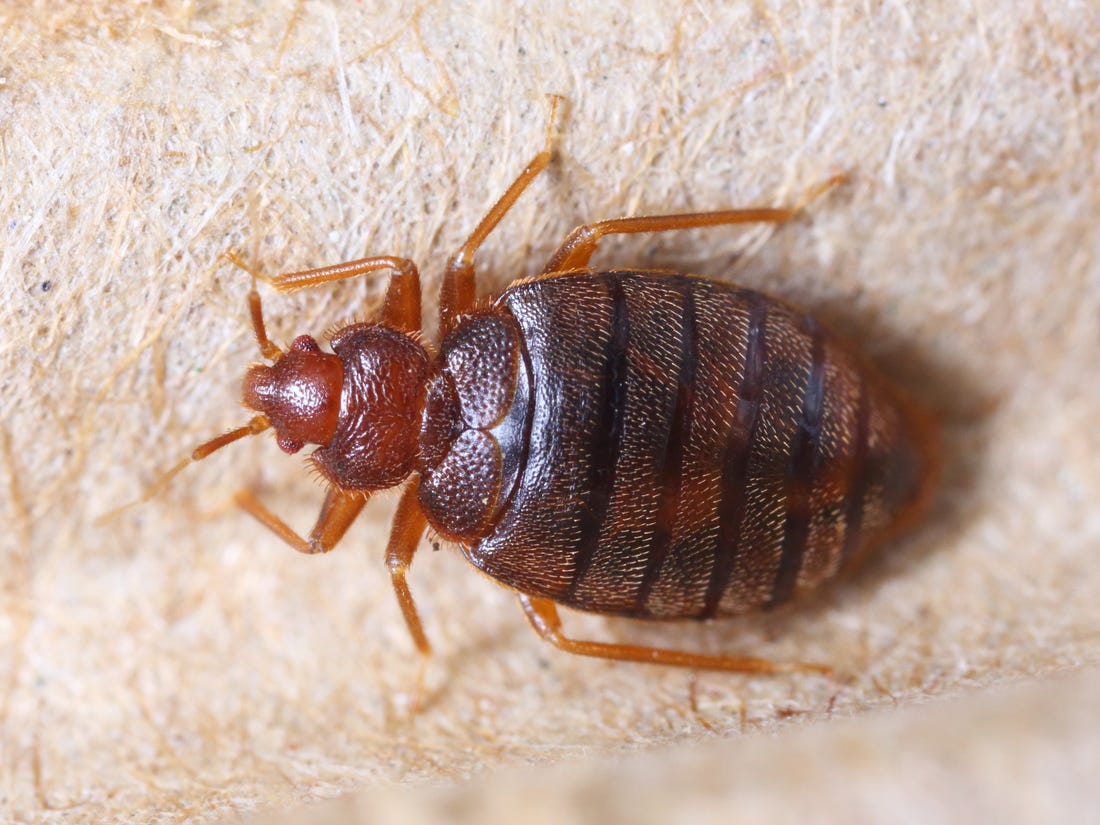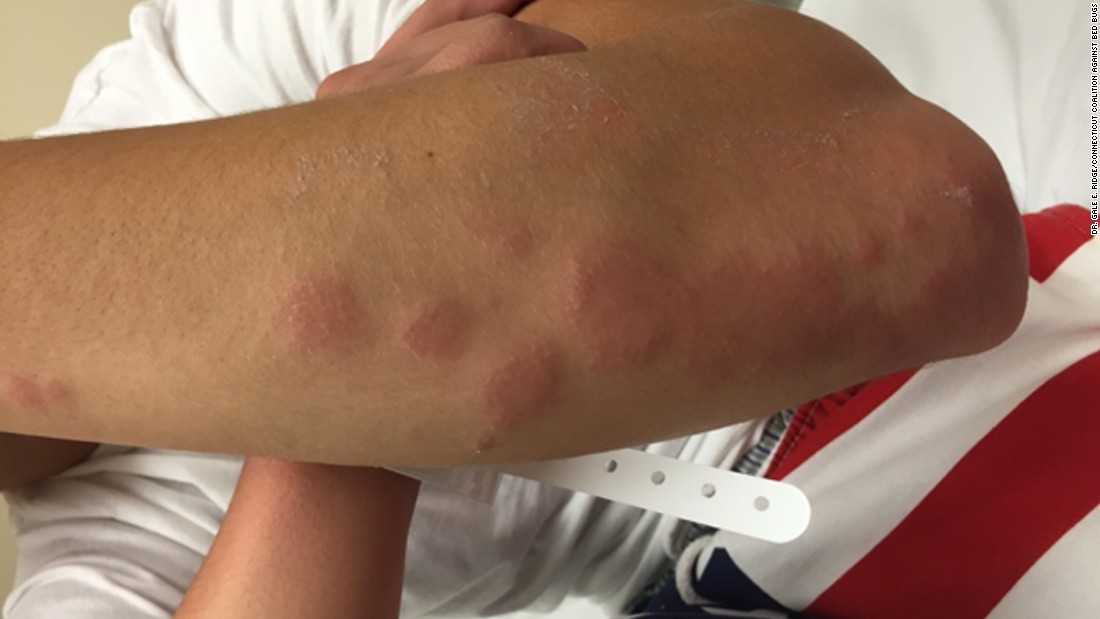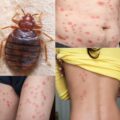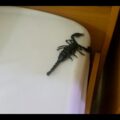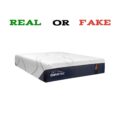Bedbugs are small, oval, brownish insects that live on the blood of animals or humans. Adult bedbugs have flat bodies about the size of an apple seed. After feeding, however, their bodies swell and are a reddish color. Bedbugs do not fly, but they can move quickly over floors, walls, and ceilings. Female bedbugs may lay hundreds of eggs, each of which is about the size of a speck of dust, over a lifetime.
Immature bedbugs, called nymphs, shed their skins five times before reaching maturity and require a meal of blood before each shedding. Under favorable conditions the bugs can develop fully in as little as a month and produce three or more generations per year. Although they are a nuisance, they are not thought to transmit diseases.
Where Bed Bugs Hide
Bedbugs may enter your home undetected through luggage, clothing, used beds and couches, and other items. Their flattened bodies make it possible for them to fit into tiny spaces, about the width of a credit card. Bedbugs do not have nests like ants or bees, but tend to live in groups in hiding places. Their initial hiding places are typically in mattresses, box springs, bed frames, and headboards where they have easy access to people to bite in the night.
Over time, however, they may scatter through the bedroom, moving into any crevice or protected location. They may also spread to nearby rooms or apartments. Because bedbugs live solely on blood, having them in your home is not a sign of dirtiness. You are as likely to find them in immaculate homes and hotel rooms as in filthy ones.
When Bedbugs Bite
Bedbugs are active mainly at night and usually bite people while they are sleeping. They feed by piercing the skin and withdrawing blood through an elongated beak. The bugs feed from three to 10 minutes to become engorged and then crawl away unnoticed.
Bedbug Bites
Most bedbug bites are painless at first, but later turn into itchy welts. Unlike flea bites that are mainly around the ankles, bedbug bites are on any area of skin exposed while sleeping. Also, the bites do not have a red spot in the center like flea bites do.People who don’t realize they have a bedbug infestation may attribute the itching and welts to other causes, such as mosquitoes. To confirm bedbug bites, you must find and identify the bugs themselves.
How To Safely Get Rid Of Bed Bugs In Nigeria
Step 1: Identify all infested areas
If you’ve got bedbugs, you want to find them early before they start to reproduce. It’s much easier—and cheaper—to treat a small infestation than a big one. Yet smaller infestations can be harder to detect. Search for bedbugs yourself, or hire a professional to do an inspection. Some inspectors use specially trained dogs to hunt down bedbugs by scent.
Bedbugs’ small, narrow bodies enable them to squeeze into tiny spots—like the seams of a mattress or couch, and the folds of curtains.
Also look for them in places like these:
- near the tags of the mattress and box spring
- in cracks in the bed frame and headboard
- in baseboards
- between couch cushions
- in furniture joints
- inside electrical outlets
- under loose wallpaper
- underneath paintings and posters on the walls
- in the seam where the wallpaper and ceiling meet
Use a flashlight and magnifying glass to go over all of these areas.
You can spot bedbugs by these signs:
- live bedbugs, which are reddish and about ¼-inch long
- dark spots about the size of a period—these are bedbug droppings
- reddish stains on your mattress from bugs that have been crushed
- small, pale yellow eggs, egg shells, and yellowish skins that young bedbugs shed
Once you find a bedbug, put it in a sealed jar along with 1 teaspoon of rubbing alcohol. Other types of bugs can look a lot like bedbugs. If you’re not sure what type of bug you’ve found, bring it to an exterminator or entomologist to identify.
Step 2: Contain the infestation
Once you know you have bedbugs, you need to keep them contained so you can get rid of them. A quick and easy way to trap bedbugs is with your vacuum. Run the vacuum over any possible hiding places.
This includes your:
- bed
- dresser
- carpets
- electronics (like TVs)
Seal up the vacuumed contents into a plastic bag and throw it away. Then thoroughly clean out the vacuum.
Seal up all your linens and affected clothes in plastic bags until you can wash them. Then put them on the highest possible temperature setting in the washer and dryer. If an item can’t be washed, put it in the dryer for 30 minutes at the highest heat setting.
Anything that can’t be treated in the washer and dryer, place in a plastic bag. Leave it there for a few months, if possible, to make sure all the bugs die. If you can’t clean furniture, throw it away. Tear it up first and spray paint the words “bedbugs” on it so no one else tries to take it home.
Step 3: Prep for bedbug treatment
Before you start treating your home, do a little prep work to maximize your odds of success. Make sure all your linens, carpets, drapes, clothing, and other hiding places have been cleaned or thrown out (see Step 2).
Next, get rid of bedbug hiding places. Pick up books, magazines, clothes, and anything else that’s lying on your floor and under your bed. Throw out whatever you can. Don’t move items from an infested room to a clean one you could spread the bugs.
Seal up any open areas. Glue down loose wallpaper. Caulk cracks in furniture and around baseboards. Tape up open electrical outlets. Finally, move your bed at least 6 inches away from the wall so bedbugs can’t climb on.
Step 4: Kill the bedbugs
You can first try to remove bedbugs without chemicals. These bugs are pretty easy to kill with high heat, 46°C, or intense cold less than 0°C
Here are a few ways to treat bedbugs using these methods:
- Wash bedding and clothes in hot water for 30 minutes. Then put them in a dryer on the highest heat setting for 30 minutes.
- Use a steamer on mattresses, couches, and other places where bedbugs hide.
- Pack up infested items in black bags and leave them outside on a hot day (95 degrees) or in a closed car. In cooler temperatures, it can take two to five months to kill sealed-up bugs.
- Put bags containing bedbugs in the freezer at 0°F (-17°C). Use a thermometer to check the temperature. Leave them in there for at least four days.
Once you’ve cleaned all visible bedbugs, make the area inhospitable for their friends. Place bedbug-proof covers over your mattress and box spring. Zip these covers up all the way. Bugs that are trapped inside will die, and new bugs won’t be able to get in.
If these methods don’t wipe out all the bugs, you may need to try an insecticide.
Non-chemical and chemical treatments
There are several Insecticides in Nigeria that can help rid your home of bedbugs. Look for products that are NAFDAC approved, and specifically marked for “bedbugs.” Some of the prominent brands in Nigeria include Raid, Mobil, Baygon, Rambo, and Mortein. Baygon and Raid are suggested for killing bedbugs instantly.
Step 5: Monitor the affected areas
Bedbugs can take some time to wipe out. Before you can trust that your treatment has worked, you need proof that the bugs have moved on. Check the infested areas about once every seven days for signs of activity. To make surviving bedbugs easier to spot, place bedbug interceptors under each leg of the bed. These devices will trap bedbugs before they can climb up into your bed. You may need to keep checking the interceptors for a full year.
Step 6: Retreat as needed
Bedbugs are hardy creatures. Just when you think you’ve wiped them out, you might spot them again. You may have to try a few different treatment methods to control the infestation. And if they still don’t go away, you’ll want to call in a professional exterminator.
Step 7: Get the pros involved
If you can’t wipe out bedbugs on your own, it’s time to get the pros involved. Pest control companies have the advantage of using chemicals and other treatments that aren’t available to you. They have insecticides that both kill bugs on contact, and that stay inside furniture and cracks to kill bedbugs in the long-term. Pest control companies can also use whole room heat treatments. They bring in special equipment that heats up the room to a temperature of between 135 and 145 degrees Fahrenheit—high enough to kill bedbugs.
Before the pest control company arrives, they should give you instructions for prepping your home. Follow their directions carefully and you’ll have the best chance of wiping out the bugs.Professional treatments take two to three visits to start working. After each treatment, you may have to stay out of the treated rooms for a few hours until the insecticides have dried.
Step 8: Keep the bedbugs out
Once the bedbugs are gone, you’ll want to make sure they stay gone for good.
Prevention tips
- Clear up any clutter. Don’t leave papers, magazines, clothes, or other items on the floor.
- Cover your mattress and box spring with a bedbug cover and zip it up all the way.
- Vacuum and wash bedding, furniture, curtains, and carpets often.
- Seal cracks around light sockets, baseboards, and electrical outlets so bedbugs can’t sneak in.
- Check for bedbugs in hotel rooms when you travel to avoid bringing them home with you.

